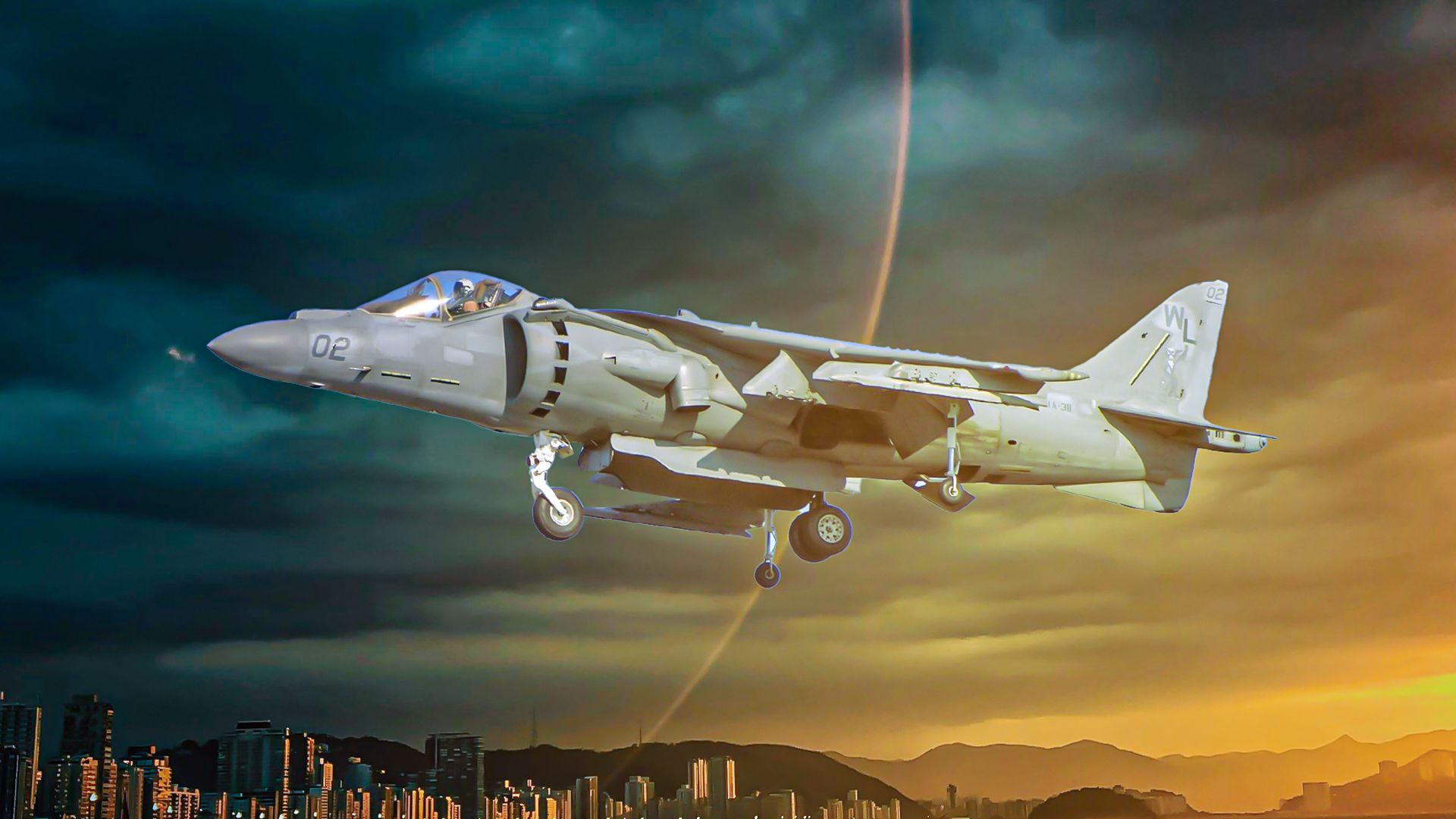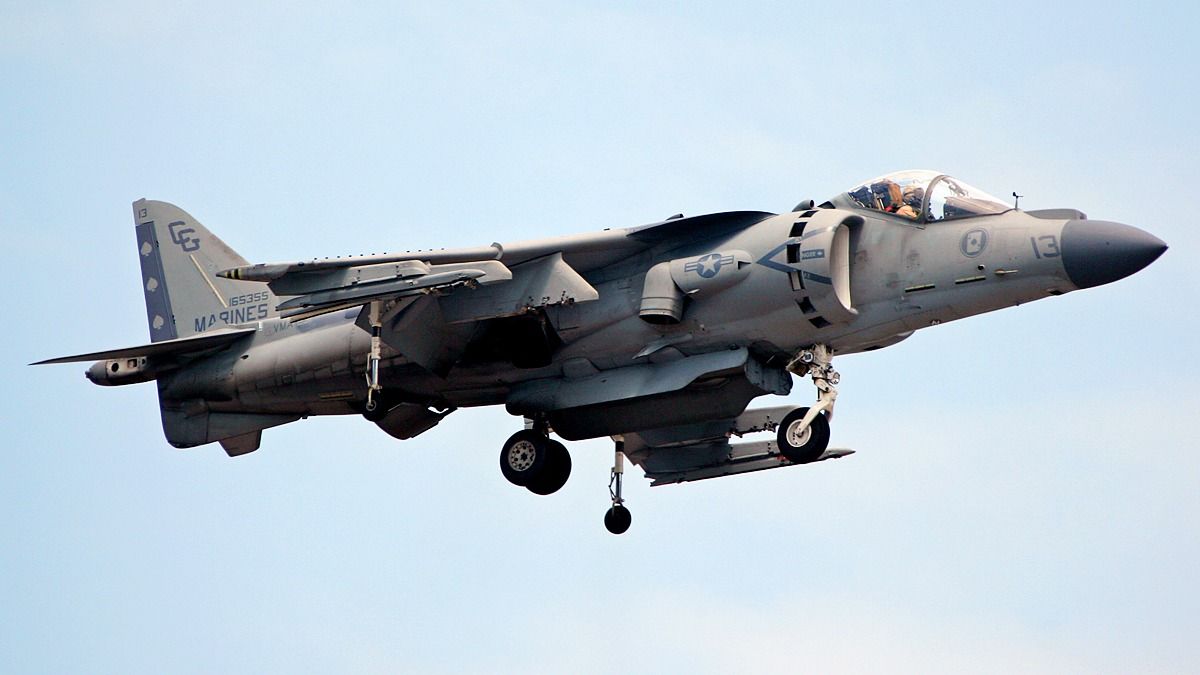Summary
- The USMC plans to retire all AV-8B Harrier II jets soon in favor of F-35Bs for tactical missions.
- With VTOL capabilities, the AV-8B Harrier II served the USMC effectively for four decades.
- Marine squadrons are transitioning to F-35Bs, ending an era of emotional attachment to the renowned Harrier.
The McDonnell Douglas AV-8B Harrier II is a second-generation single-engine attack aircraft capable of Vertical or Short Takeoff And Landing (V/STOL). The aircraft was designed for light-attack missions, including close air support and armed reconnaissance.
The AV-8B Harrier II performed its maiden flight in November 1981 and entered service with the United States Marine Corps (USMC) in January 1985. The USMC has operated a healthy Harriers II fleet for nearly four decades. As of January, the USMC has 99 Harrier II, including 12 TAV-8B Trainer variants. The Marine Corps plans to retire all Harriers in the coming years and replace them with F-35Bs.
USMC AV-8B Harrier II
- Crew: 1 pilot
- Length: 46 ft 4 in (14.12 m)
- Wingspan: 30 ft 4 in (9.25 m)
- Height: 11 ft 8 in (3.55 m)
- Wing area: 243.4 sq ft (22.61 m2)
- Airfoil: supercritical airfoil
- Empty weight: 13,968 lb (6,340 kg)
- Gross weight: 22,950 lb (10,410 kg)
-
Maximum takeoff weight:
- Rolling takeoff: 31,000 lb (14,100 kg)
- Vertical takeoff: 20,755 lb (9,415 kg)
- Powerplant: 1 × Rolls-Royce Pegasus F402-RR-408 (Mk 107) vectored-thrust turbofan
- Thrust: 23,500 lbf (105 kN)
The USMC had been a longtime supporter of the AV-8B well before its completion. The agency acquired the type to support both its land and sea operations. The aircraft’s VTOL capability enables it to take off from almost any surface, with a rolling take-off weight of 31,000 lb (14,100 kg) and vertical takeoff weight of 20,755 lb (9,415 kg).
The larger rolling MTOW is supported by additional lift produced by the wings as a result of elevated runup speed.
According to the US Navy,
“Combining tactical mobility, responsiveness, reduced operating cost and basing flexibility, both afloat and ashore, V/STOL aircraft are particularly well suited to the special combat and expeditionary requirements of the Marine Corps. The AV-8BII+ features the APG-65 Radar common to the F/A-18, as well as all previous systems and features common to the AV-8BII.”
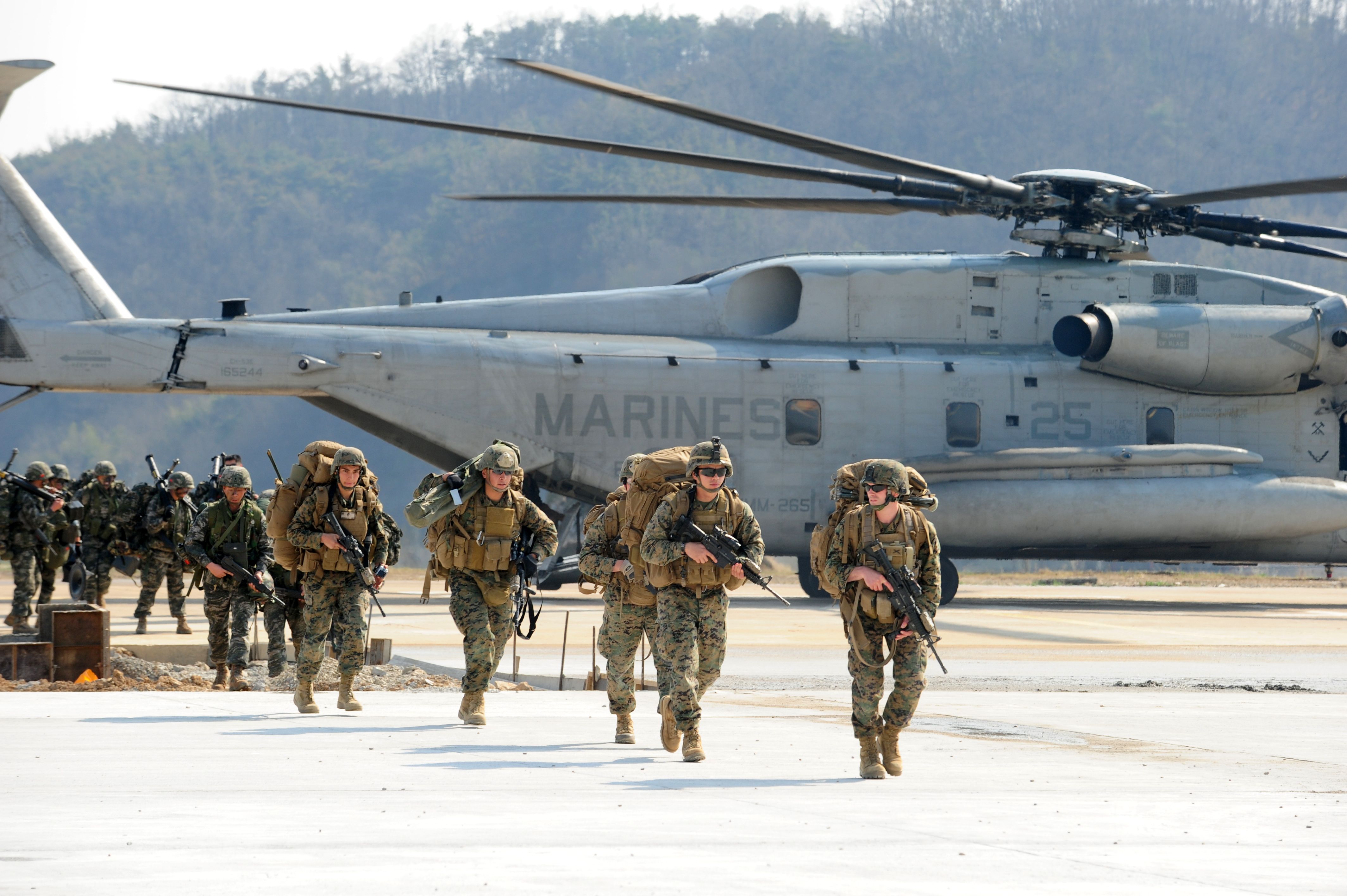
Related
US Naval Institute Calls For Medium-Range Air Defense For Marines
A missile system mounted to an ACV has been suggested.
Salient tasks of the AV-8B Harrier II
- Maximum speed: Mach 0.9 (585 knots, 673 mph, 1,083 km/h)
- Range: 1,200 NM (1,400 mi, 2,200 km)
- Combat range: 300 NM (350 mi, 556 km)
- Ferry range: 1,800 NM (2,100 mi, 3,300 km)
- Rate of climb: 14,700 ft/min (75 m/s)
The Marine Corps operates 87 AV-8Bs and 12 TAV-8B trainer aircraft. Several fighter squadrons operate a fleet of decades-old jets. The USMC aims to fully transition to the Lockheed Martin F-35B aircraft by 2026.
- Marine Attack Squadron 223: Operator of the AV-8Bs since 1987
- Marine Attack Squadron 311: Operated AV-8Bs between 1988 and 2020
- Marine Attack Squadron 542: Operated AV-8Bs since 1986 to 2022
- Marine Attack Training Squadron 203: Operator of 13 AV-8Bs and 13 TAV-8Bs
In April, the 2nd Marine Aircraft Wing reported that the final two AV-8B Harrier II pilots, Captain Joshua Corbett and Captain Sven Jorgensen, completed their training, receiving the last 7509 military occupational specialty designation reserved for qualified pilots of the aircraft.
According to Captain Corbett, as highlighted by Marine Corps Times,
“The significance of the last replacement pilot training flight in the Harrier community is that it is the beginning of the end for us as a community. The Harrier, more than many aircraft than I have come across, elicits an emotional response. … All good things have to come to an end, and it’s our turn soon, but not yet.”
Squadron groups already converted to F-35Bs
- Marine Attack Squadron 211: Operated AV-8Bs from 1990 to 2016.
- Marine Attack Squadron 214: Operated AV-8Bs from 1988 to 2022.
- Marine Attack Squadron 513: Operated AV-8Bs from 1961 to 2013.
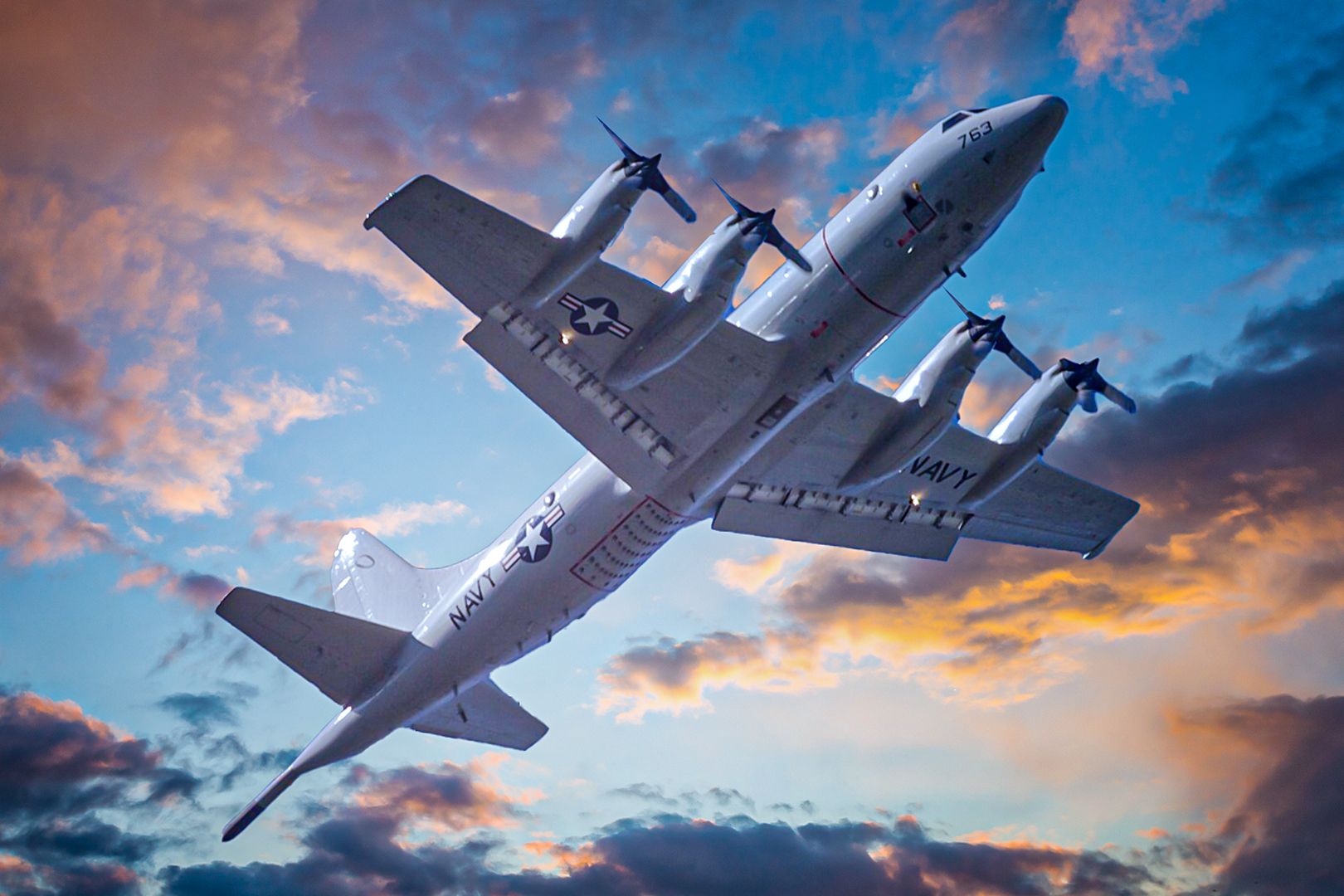
Related
P-3 Orion: What To Know About The US Navy’s Long-Range Submarine Hunter
A deep dive into what made the P-3 Orion a true sentinel of the seas.
USMC AV-8B Harrier II missions
- Guns: 1× General Dynamics GAU-12 Equalizer 25 mm (0.984 in) 5-barreled Rotary cannon
-
Hardpoints: 6× under-wing pylon and 1x under-fuselage stations
- Rockets: 4-19 round pods
- Missiles: Air-to-air and air-to-surface
- Bombs: Unguided and laser-guided
- Others: Drop tanks, jammers, etc
The Harrier II aircraft are primarily used to conduct close air support using conventional and specialized weapons. Ground support is provided for friendly forces vulnerable to enemy lines. The aircraft also provides deep air support, including armed reconnaissance, air interdiction, and anti-air warfare.
The US Navy suggests that combat air patrol, armed escort missions, and ground-to-air defenses are part of the Harrier II missions. The aircraft also carries and delivers ordinance at night and fly long distances under instrument flight conditions. The aircraft range for extended operations is achieved by employing aerial refueling.
The Harrier II has a unique capability to operate from carriers and other shorter platforms. Moreover, expeditionary airfields, airstrips, and unpaved sites can be used for operations.
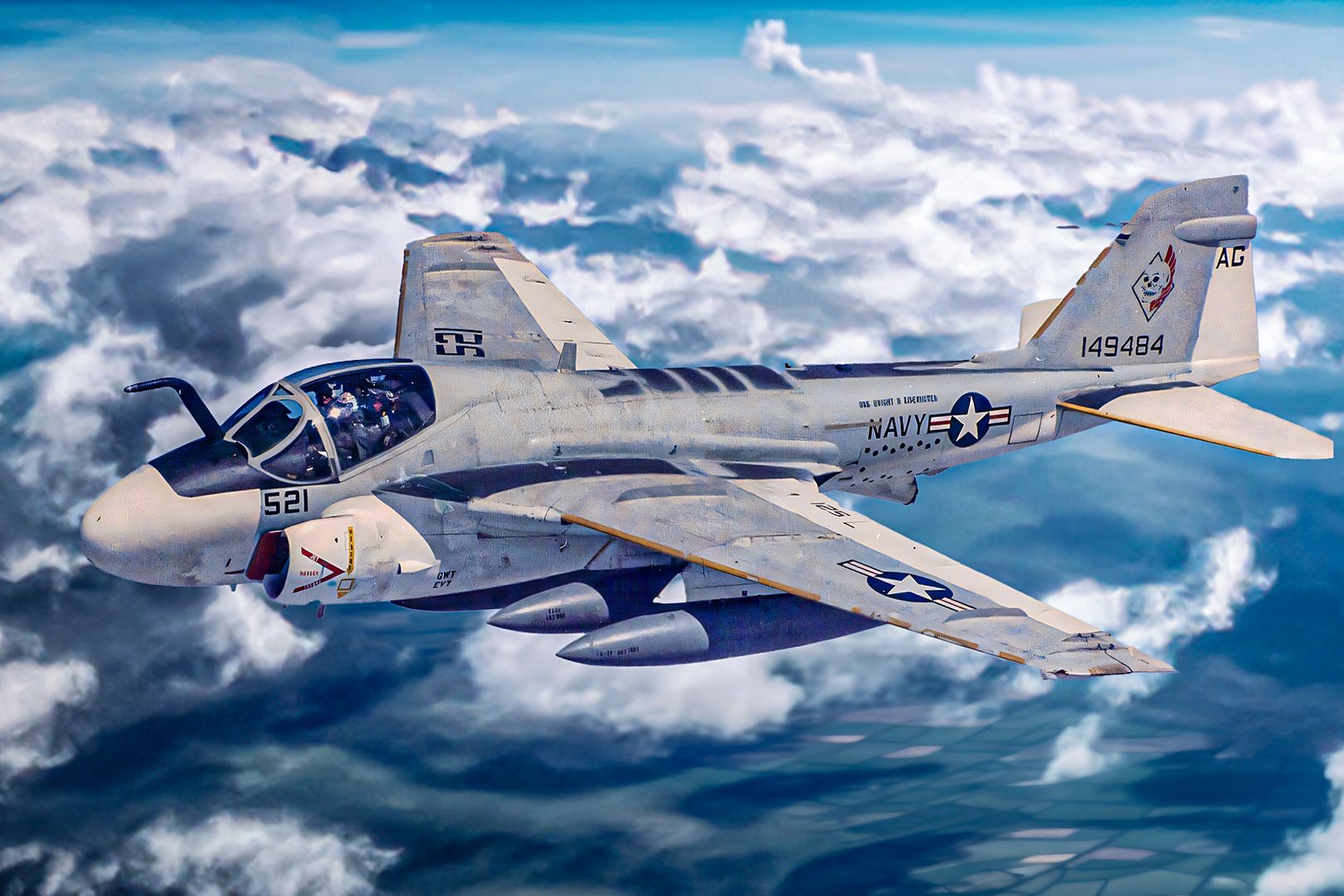
Related
5 Facts To Know About The Grumman A-6E Intruder: US Navy & Marine Corps’ Cold War Versatile Bomber
It is the world’s first fully all-weather attack bomber.
What are your thoughts on the AV-8B Harrier II missions with the United States Marine Corps? Share your views in the comments section.

